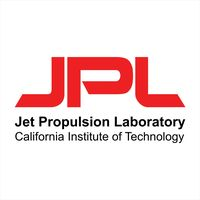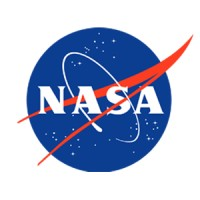NASA's Cosmic Beats: A Journey Through Sound and Innovation** **
July 26, 2024, 10:15 am

Location: Philippines, Palawan, Pasadena
Employees: 5001-10000
Founded date: 1936

Location: United States, Maryland, Greenbelt
Employees: 10001+
Founded date: 1958
Total raised: $25.7B
**
NASA has taken a bold step into the realm of music and space exploration. On July 12, 2024, the Jet Propulsion Laboratory (JPL) transmitted a hip-hop song to Venus, a distance of approximately 254 million kilometers. The chosen track? "The Rain (Supa Dupa Fly)" by Missy Elliott, a five-time Grammy winner. This marks a historic moment, as it is the first time a hip-hop song has been sent into deep space.
The transmission was made possible through NASA's Deep Space Network (DSN), a vast array of giant radio antennas that communicate with spacecraft venturing beyond the Moon. The signal traveled at the speed of light, reaching Venus in about 14 minutes. This is not NASA's first foray into sending music into the cosmos. In 2008, the agency beamed The Beatles' "Across the Universe" toward Polaris, a star located 447 light-years away.
The connection between space exploration and Missy Elliott's music is more than just a publicity stunt. It reflects a shared ethos of pushing boundaries. Both endeavors seek to expand horizons, whether through the exploration of the universe or the creation of innovative art. The choice of Elliott's song is particularly fitting, as her work often incorporates futuristic themes and visuals, making her a natural fit for this cosmic collaboration.
NASA's ambitions do not stop with music. The agency is gearing up for two missions to Venus, with the first, DAVINCI, set to launch no earlier than 2029. Following that, the VERITAS mission aims to delve deeper into Venusian mysteries after 2031. These missions will provide invaluable data about our neighboring planet, enhancing our understanding of its atmosphere and geology.
Meanwhile, another innovative project is taking shape at JPL: BALLET, or Balloon Locomotion for Extreme Terrain. This concept envisions a walking balloon that could explore celestial bodies like Titan, Saturn's largest moon, or even the ocean floor on Earth. The design features a buoyant balloon supported by six "legs," each capable of sampling the surface and analyzing its chemical composition.
The mechanics of BALLET are fascinating. Each leg is connected to the balloon by adjustable cables, allowing it to lift and reposition itself as it moves. This design is particularly suited for Titan, where the dense atmosphere provides stable conditions for exploration. Unlike Mars, where high winds could disrupt operations, Titan's environment is more forgiving, making it an ideal candidate for this innovative technology.
The potential applications of BALLET extend beyond space. On Earth, it could revolutionize underwater mining operations. As the demand for materials like cobalt rises, traditional mining methods often wreak havoc on marine ecosystems. BALLET offers a more sustainable alternative, allowing for the collection of valuable resources without the destructive impact of conventional techniques.
However, the journey of BALLET is not without challenges. Coordinating the movement of its legs, managing cable lengths, and ensuring stability are complex tasks. As the project progresses, it will require further funding and development to bring this vision to life.
Both NASA's musical transmission and the BALLET project exemplify the agency's commitment to innovation. They showcase how creativity and technology can intersect, pushing the boundaries of what is possible. Music can transcend distances, just as exploration can unveil the mysteries of the universe.
As we look to the stars, we are reminded that the quest for knowledge is not just about science. It is also about culture, art, and the human experience. Sending a hip-hop song to Venus is a celebration of creativity, a reminder that even in the vastness of space, we carry our stories with us.
In a world where technology often feels cold and impersonal, these initiatives breathe life into the exploration of the cosmos. They remind us that the universe is not just a collection of planets and stars; it is a canvas for human expression and ingenuity.
As NASA continues to push the envelope, we can expect more groundbreaking projects that blend art and science. The future holds endless possibilities, and with each new mission, we take another step toward understanding our place in the universe.
In conclusion, NASA's recent endeavors highlight the importance of creativity in exploration. Whether through music or innovative technology, the agency is forging a path that intertwines human expression with the quest for knowledge. As we send our sounds into the cosmos, we also send a message: we are here, we are curious, and we are ready to explore. The universe awaits, and so does the next great adventure.
NASA has taken a bold step into the realm of music and space exploration. On July 12, 2024, the Jet Propulsion Laboratory (JPL) transmitted a hip-hop song to Venus, a distance of approximately 254 million kilometers. The chosen track? "The Rain (Supa Dupa Fly)" by Missy Elliott, a five-time Grammy winner. This marks a historic moment, as it is the first time a hip-hop song has been sent into deep space.
The transmission was made possible through NASA's Deep Space Network (DSN), a vast array of giant radio antennas that communicate with spacecraft venturing beyond the Moon. The signal traveled at the speed of light, reaching Venus in about 14 minutes. This is not NASA's first foray into sending music into the cosmos. In 2008, the agency beamed The Beatles' "Across the Universe" toward Polaris, a star located 447 light-years away.
The connection between space exploration and Missy Elliott's music is more than just a publicity stunt. It reflects a shared ethos of pushing boundaries. Both endeavors seek to expand horizons, whether through the exploration of the universe or the creation of innovative art. The choice of Elliott's song is particularly fitting, as her work often incorporates futuristic themes and visuals, making her a natural fit for this cosmic collaboration.
NASA's ambitions do not stop with music. The agency is gearing up for two missions to Venus, with the first, DAVINCI, set to launch no earlier than 2029. Following that, the VERITAS mission aims to delve deeper into Venusian mysteries after 2031. These missions will provide invaluable data about our neighboring planet, enhancing our understanding of its atmosphere and geology.
Meanwhile, another innovative project is taking shape at JPL: BALLET, or Balloon Locomotion for Extreme Terrain. This concept envisions a walking balloon that could explore celestial bodies like Titan, Saturn's largest moon, or even the ocean floor on Earth. The design features a buoyant balloon supported by six "legs," each capable of sampling the surface and analyzing its chemical composition.
The mechanics of BALLET are fascinating. Each leg is connected to the balloon by adjustable cables, allowing it to lift and reposition itself as it moves. This design is particularly suited for Titan, where the dense atmosphere provides stable conditions for exploration. Unlike Mars, where high winds could disrupt operations, Titan's environment is more forgiving, making it an ideal candidate for this innovative technology.
The potential applications of BALLET extend beyond space. On Earth, it could revolutionize underwater mining operations. As the demand for materials like cobalt rises, traditional mining methods often wreak havoc on marine ecosystems. BALLET offers a more sustainable alternative, allowing for the collection of valuable resources without the destructive impact of conventional techniques.
However, the journey of BALLET is not without challenges. Coordinating the movement of its legs, managing cable lengths, and ensuring stability are complex tasks. As the project progresses, it will require further funding and development to bring this vision to life.
Both NASA's musical transmission and the BALLET project exemplify the agency's commitment to innovation. They showcase how creativity and technology can intersect, pushing the boundaries of what is possible. Music can transcend distances, just as exploration can unveil the mysteries of the universe.
As we look to the stars, we are reminded that the quest for knowledge is not just about science. It is also about culture, art, and the human experience. Sending a hip-hop song to Venus is a celebration of creativity, a reminder that even in the vastness of space, we carry our stories with us.
In a world where technology often feels cold and impersonal, these initiatives breathe life into the exploration of the cosmos. They remind us that the universe is not just a collection of planets and stars; it is a canvas for human expression and ingenuity.
As NASA continues to push the envelope, we can expect more groundbreaking projects that blend art and science. The future holds endless possibilities, and with each new mission, we take another step toward understanding our place in the universe.
In conclusion, NASA's recent endeavors highlight the importance of creativity in exploration. Whether through music or innovative technology, the agency is forging a path that intertwines human expression with the quest for knowledge. As we send our sounds into the cosmos, we also send a message: we are here, we are curious, and we are ready to explore. The universe awaits, and so does the next great adventure.